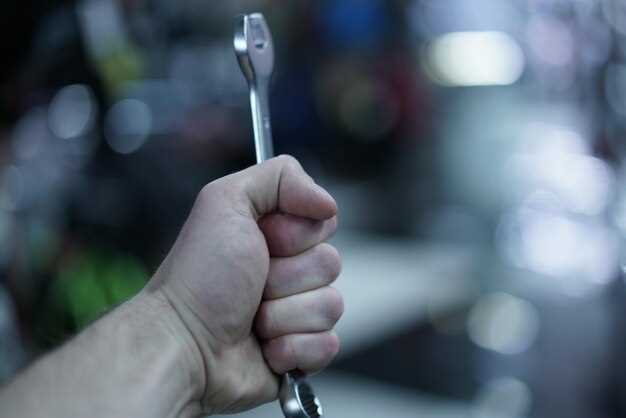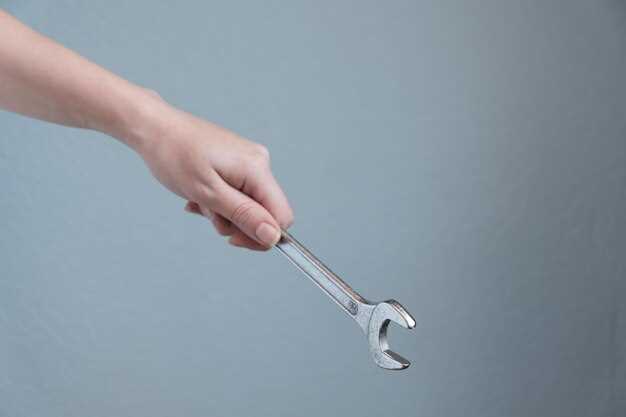
When it comes to performing mechanical work, having the right tools is essential for achieving precise results. One of the most critical tools in any mechanic’s arsenal is the torque wrench. Understanding how to use this specialized instrument correctly not only enhances the quality of your work but also ensures safety and longevity of the components you are working on.
A torque wrench measures the amount of rotational force applied to a fastener. This makes it vital for tasks such as assembling engines, installing suspension components, and any application where the tightness of bolts is crucial. Incorrect torque can lead to stripped threads, failed components, or even dangerous situations. Therefore, having a firm grasp on how to use a torque wrench effectively is paramount for both professionals and DIY enthusiasts alike.
In this article, we will explore the fundamental aspects of using a torque wrench. From understanding its different types to learning the correct torque specifications for various applications, each section is designed to equip you with the knowledge needed to use this tool confidently and effectively. By the end, you will understand how to maximize the benefits of this indispensable tool in your mechanical projects.
Selecting the Right Torque Wrench for Your Project
Choosing the correct torque wrench for your project is crucial to ensure accurate fastening and prevent damage to components. Start by considering the type of fasteners you’ll be working with. Different projects may require various styles of wrenches, such as beam, click, electronic, or dial types. Each style has its advantages, depending on precision needs and ease of use.
Next, determine the torque range necessary for your project. Torque wrenches come with specific measurement limits, typically indicated in foot-pounds or Newton-meters. Ensure that the wrench you select can handle the minimum and maximum torque requirements of your fasteners, which you may find in the manufacturer’s specifications.
Accuracy is another vital consideration. If your project demands high precision, opt for a torque wrench with a smaller tolerance level. Professional-grade wrenches usually provide better accuracy and are suitable for automotive applications and critical assembly tasks.
Handle length and design also play a role in selecting a torque wrench. Longer handles provide greater leverage, while shorter handles may be more suitable for compact spaces. Choose a handle design that offers comfort, as a good grip ensures better accuracy and reduces the risk of over-tightening.
Lastly, consider the maintenance habits and storage capabilities. Digital and electronic torque wrenches may require additional care, such as battery management or software updates. Opt for a durable case or storage solution to protect your torque wrench from damage, ensuring its longevity and reliability for future projects.
Understanding Torque Specifications for Different Fasteners

Torque specifications are crucial for ensuring that fasteners are tightened to the correct level, which prevents failures and ensures the integrity of assemblies. Each type of fastener, whether a bolt, nut, or screw, has specific torque requirements based on its size, grade, and material. These specifications can typically be found in manufacturer guidelines or standard torque tables.
For example, small screws might require a lower torque value than larger bolts. Similarly, high-grade fasteners, such as those made from alloy steel, often tolerate and require higher torque values to achieve optimal clamping force. Using a torque wrench allows for precise application of these specifications, minimizing the risk of over-tightening or under-tightening.
It is also important to consider the lubrication of fasteners, as it can significantly affect the required torque. Lubricated fasteners will typically need less torque compared to dry ones due to decreased friction. Always refer to the manufacturer’s specifications for the correct torque settings, as using a torque wrench without understanding these details can lead to inadequate assembly or damage to the components.
To ensure effective use of a torque wrench, familiarize yourself with the appropriate scale on the wrench, whether it is in foot-pounds or Newton-meters. Adjust the wrench accordingly before use and double-check your settings to guarantee accuracy. Understanding these torque specifications is fundamental to the successful assembly and maintenance of mechanical systems.
Calibrating Your Torque Wrench for Accurate Measurements

Calibration of your torque wrench is essential to ensure precise measurements and optimal performance. An inaccurate wrench can lead to over-tightening or under-tightening fasteners, causing potential damage or failure. Follow these steps to calibrate your wrench properly.
First, gather the necessary tools, including a calibration device or a torque tester. Many professionals recommend using a digital torque tester for accuracy. Ensure that the torque wrench you plan to calibrate is clean and free from any contaminants that may affect its performance.
To begin the calibration process, set the torque wrench to a specific value using the adjustment knob or settings. It is advisable to choose a torque level that falls within the middle range of the wrench’s capabilities for the initial test. Tighten the calibration device using your wrench until you reach the set torque value. Take note of the reading on the device.
Next, compare the reading from the calibration device to the value you set on the torque wrench. If the measurements match, your wrench is calibrated correctly. If there is a discrepancy, you will need to adjust the wrench according to the manufacturer’s instructions. This may involve tightening or loosening an internal mechanism.
Repeat the process at several different torque levels, typically ranging from the minimum to maximum capacity of the wrench. This will help to ensure that it is accurate across the entire scale. Document all readings for future reference.
After recalibrating, it is a good practice to check your torque wrench periodically, especially before important tasks. Depending on usage, recalibration may be required every few months or after several uses to maintain accuracy.
Finally, always store your torque wrench properly, preferably in a protective case and in a neutral position (not set to the maximum torque). This will help maintain its calibration and prolong its lifespan.
Proper Techniques for Applying Torque to Fasteners
Applying torque correctly to fasteners is essential for ensuring the integrity and longevity of mechanical assemblies. Here are some key techniques to follow when using a torque wrench:
- Select the Right Tools:
Choose a torque wrench that fits the requirements of your project. Ensure the wrench is calibrated and appropriate for the torque specifications of the fasteners you are working with.
- Understand Torque Specifications:
Always refer to the manufacturer’s specifications for the correct torque value. This information can typically be found in service manuals or engineering documents.
- Pre-Adjust the Torque Wrench:
Set the torque wrench to the specified value before starting work. For click-type wrenches, ensure the setting is properly adjusted to avoid under or over-tightening.
- Align Properly:
Align the torque wrench and socket with the fastener to avoid introducing additional forces that could affect the torque reading. Make sure the wrench is perpendicular to the fastener.
- Apply Torque Smoothly:
Gradually apply force to the wrench. Avoid jerky or sudden movements, as these can lead to inaccurate torque readings and damage the fasteners.
When tightening multiple fasteners, follow these additional tips:
- Follow a Sequence:
Use a specified tightening sequence, usually starting in the center and moving outward, to ensure even distribution of load and to prevent warping.
- Use a Torque Angle Measurement:
For certain applications, especially with specific fasteners, you may need to use an angle gauge to maintain consistent torque. This ensures proper stretch and load distribution.
In conclusion, employing proper techniques for applying torque to fasteners is crucial. Adhering to these practices will help you achieve optimal results and maintain the reliability of your assemblies.
Common Mistakes to Avoid When Using Torque Wrenches
Using torque wrenches effectively requires understanding certain best practices and avoiding common pitfalls. Here are several mistakes to look out for when utilizing these essential tools.
- Not Calibrating the Tool: Failing to regularly calibrate your torque wrench can lead to inaccurate readings. Make sure to check the calibration according to the manufacturer’s recommendations.
- Using the Wrong Type: Different torque wrenches are designed for specific applications. Ensure you are using the appropriate type (beam, click, digital) for your task to avoid errors in torque settings.
- Over-Tightening: One of the most common mistakes is applying too much torque. Always adhere to the specified torque values to prevent damaging bolts or components.
- Neglecting the Torque Sequence: In applications involving multiple fasteners, follow the recommended torque sequence. Ignoring this can lead to uneven pressure distribution and potential failure.
- Not Using a Torque Wrench at All: Relying solely on hand-tightening or using other tools can lead to imprecise torque application. Always use a torque wrench when specific torque values are required.
- Improper Storage: Storing a torque wrench incorrectly can damage its internal mechanisms. Store in a protective case and avoid leaving it under tension.
- Failure to Read the Manual: Each torque wrench comes with its own set of instructions. Not reading the manual may result in misuse or missed important features.
Avoiding these common mistakes will ensure that you use torque wrenches correctly, ultimately leading to more reliable and safer results in your projects.
Maintaining and Storing Your Torque Wrench for Longevity
Proper maintenance and storage are essential for ensuring the longevity and accuracy of your torque wrench. By following a few simple guidelines, you can keep your tools in optimal condition and extend their lifespan significantly.
Firstly, it is important to regularly inspect your torque wrench for any signs of wear or damage. Look for stripped gears, tarnished surfaces, or any other physical imperfections that could compromise its function. If you notice any issues, consider replacing the wrench to avoid inaccurate torque readings.
After each use, clean the wrench carefully. Remove any dirt, grease, or debris that may have accumulated during your work. Use a soft cloth or a brush to clean the exterior and avoid harsh cleaners that could damage the finish.
Most torque wrenches come with a specific torque setting range. Always set your wrench to its lowest torque setting when not in use. This practice helps to relieve tension on the internal mechanisms, preserving the calibration and accuracy of the tool.
When storing your torque wrench, choose a dry, cool location away from direct sunlight and humidity. Consider using a protective case or a designated tool drawer to prevent accidental drops or impacts that could affect its calibration. Hanging the wrench on a pegboard or keeping it in a toolbox with other tools may expose it to unnecessary risks.
| Maintenance Tips | Storage Recommendations |
|---|---|
| Inspect for wear and damage regularly | Store in a dry, cool location |
| Clean after each use | Use a protective case |
| Set to lowest torque setting when not in use | Avoid direct sunlight and humidity |
| Calibrate periodically according to manufacturer guidelines | Keep away from other heavy tools to prevent damage |
By adhering to these maintenance practices and storage solutions, you can ensure that your torque wrench remains a reliable and accurate tool for many years, enhancing both your productivity and safety during projects.
